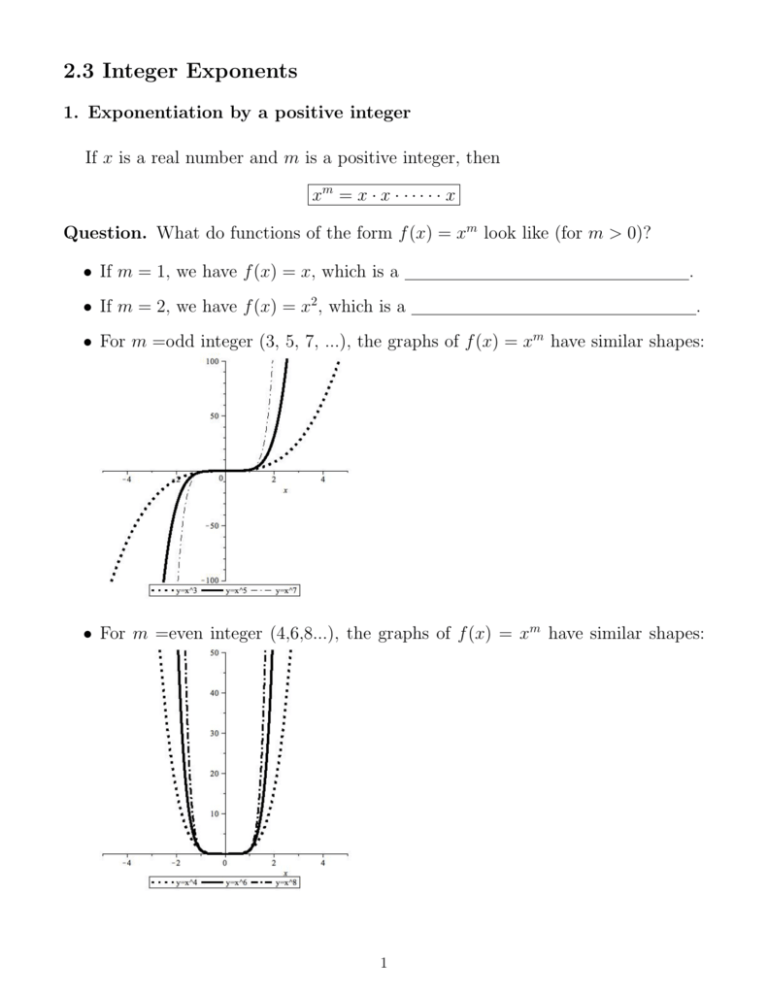2.3 Integer Exponents
advertisement

2.3 Integer Exponents 1. Exponentiation by a positive integer If x is a real number and m is a positive integer, then xm = x · x · · · · · · x Question. What do functions of the form f (x) = xm look like (for m > 0)? • If m = 1, we have f (x) = x, which is a • If m = 2, we have f (x) = x2 , which is a . . • For m =odd integer (3, 5, 7, ...), the graphs of f (x) = xm have similar shapes: • For m =even integer (4,6,8...), the graphs of f (x) = xm have similar shapes: 1 Properties of Exponentiation Suppose that x and y are numbers and m and n are positive integers. Then a) xm xn = xm+n b) (xm )n = xmn c) xm y m = (xy)m Proof. a) b) c) Note: • We define x0 to equal 1 (if x 6= 0). • We define 00 to be undefined. 2 2. Exponentiation by a negative integer If x 6= 0 and m is a positive integer, then x−m = 1 xm Example. 2−3 = • For m =odd positive integer, the graphs of f (x) = x−m have similar shapes: This general shape is called a . • For m =even positive integer, the graphs of f (x) = x−m have similar shapes: Remark. ponents. all properties of exponentiation mentioned above hold for negative ex- 3 More properties of exponents Suppose x and y are nonzero numbers and let m and n be integers. Then d) x0 = xm e) n = x xm f) m = y Example. Write 274000 as a power of 3. Example. Simplify (x2 y 4 )−3 (x5 y −2 )4 4






